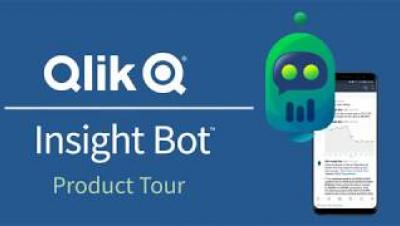Systems | Development | Analytics | API | Testing
BI
New Machine Learning Research on Learning With Limited Labeled Data
Part 1: How machine learning, AI and automation could break the BI adoption barrier
Can we fix the plague in analytics with AI? Every Business Intelligence (BI) and analytics vendor is integrating a form of artificial intelligence (AI), machine learning algorithm (ML), and natural language generation (NLG) into their products. 'Augmented analytics', is the hot new topic and full of hype right now, but can it fix the fundamental flaw that has plagued BI tools for decades - adoption?
Why going global was the best thing we did
I often get asked why Yellowfin decided to go global. While the Australian market is relatively large, it’s also quite risk averse, which makes it a challenging market to sell into. While VC-backed software vendors have the benefit of selling to others within their VC family, as a bootstrapped startup we had to forge legitimate markets outside of Australia. We knew that we had to spread our wings to grow and expanding overseas quickly gave us the opportunity to sell faster.
Don't blame your people for not being data-driven, blame your technology
Don't blame your people for not being data-driven, blame your technology
Recently, I read why companies are failing in their efforts to become data-driven in the Harvard Business Review. It said that 72% of Chief Data Officers believe their organization doesn't have a data culture and 92.5% of them blame their people. But I think they’re wrong. The real issue is that people aren’t using the tools that their CDOs have bought for them. That means the problem isn’t with the users, it’s with the technology they’ve been given.
5 Technical Skills Every Successful Analyst Needs to Have
I recently had the pleasure of attending the Center for Business Analytics Career Panel event at Villanova University where myself and other analytics professionals sat on a panel to discuss the future of analytics with the students.
The Distribution of Everything
Back in the 60s Bod Dylan sang “The Times They Are a-Changin” which has become a famous and lasting anthem of change. Bowie wrote ‘Changes’ in the 70s but it’s the “Winds of Change” from the Scorpions that plays in my head when I hear the phrase - Change is the only constant, and nowhere is this truer than in the world of tech.
Making Sense of the 2019 Gartner Magic Quadrant for Data Quality Tools
By now, you know that data is the lifeblood of digital transformation. But the true digital leaders have taken a step beyond by starting to understand the need to preserve this lifeblood with people, process and tools. That’s why data quality is so important in its ability to take control of the health of your data assets from diagnostic to treatment and monitoring with whistleblowers.








